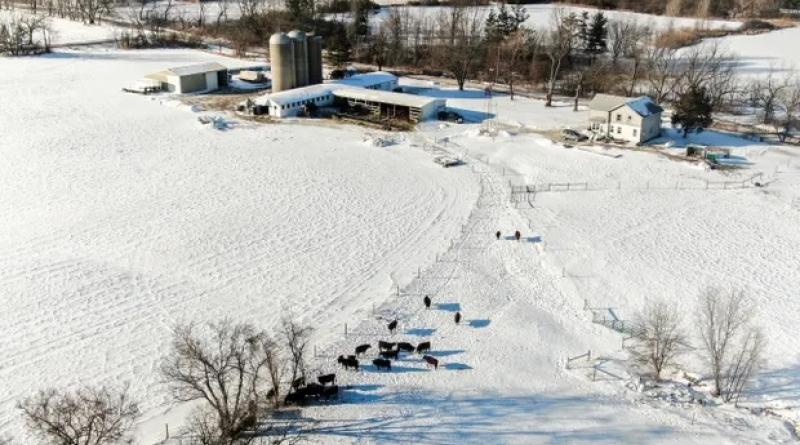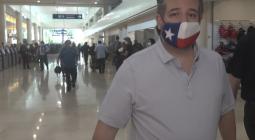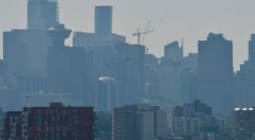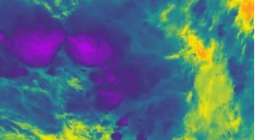Historic heat to extreme chill: why is the US experiencing a cold snap?

Blistering cold events are becoming more stark and pose a threat not only to humans but to entire ecosystems
The extreme cold settling over the US this week will be biting, as a blast of arctic air and strong winds threaten to plunge several regions into subzero temperatures. Roughly 150 million people across the US will be forced to face the frigid conditions, posing life-threatening dangers to anyone without shelter from the storms, wreaking havoc on holiday travel plans and possibly straining susceptible power grids.
“The shock to the system so to speak – whether that’s human bodies or power grid – is going to be substantial because we haven’t seen this in a long time,” said climate scientist Daniel Swain, noting that, in general, numbing cold is becoming less common.
Blistering cold events aren’t exactly new, but they are becoming more stark. The dramatic and sudden shift in severity, from record highs to precipitous plunges, can have a profound effect on adaptation, especially for plants, animals and ecosystems exposed to the elements. This week’s winter storms may have their own connections to the climate crisis, which scientists are still discussing and debating. But it’s clear that the underlying impacts caused by global heating may make them harder to endure.
The National Weather Service warned that the severe storm will produce record-breaking conditions with temperatures quickly plummeting by 25-35F, and winds gusting up to 60 mph. Moving southward across the central plains, the system will also produce heavy snowfall and blinding whiteout squalls. Every state in the continental US is expected to feel a freeze this week, with areas east of the continental divide bearing the brunt, and some areas could reach temperatures as low as -70F.
In these cold temperatures, frostbite can occur in under five minutes, NWS said.
All this, while many areas impacted by the surge were in the midst of having record-hot Decembers. “It will be more of a drastic change from what humans and other living things have been experiencing recently,” Alex Lamers, the warning coordination meteorologist for the National Weather Service’s Weather Prediction Center said, adding that it “is unusual to see this magnitude of a temperature fall in such a short period of time”.
Experts say that could make it harder for animals and ecosystems, even those that are typically well-adapted to the cold.
“Birds are generally able to cope with cold conditions – especially in areas where low temperatures are common,” Brooke Bateman, director of Climate Science with the National Audubon Society said. “But when conditions are this cold, birds need to use more energy and require more food, which puts them at risk of not being able to sustain themselves.”
Migratory species may face greater challenges, especially those who lingered north longer because of the warmer weather. “Birds like bluebirds that tend to cue migration based on weather conditions and food availability may find themselves unable to cope with the cold snap while also trying to retreat from it,” she said.
Other birds, including the chipping sparrow, Carolina wren, American robin, and northern cardinal have expanded their ranges north because of warmer winters caused by the climate crisis. They may be less equipped to handle the extreme chill. She encouraged those concerned to create bird-friendly communities with feeders and native plants that can help provide key sources of sustenance.
The abruptness of the drop in temperatures is also expected to impact aquatic life. Fish and other water bound animals typically retreat into the depths when conditions worsen. If changes happen too quickly, they may not get there in time. Several areas may emerge from the freezing conditions to find scores of fish littering their shores.
The Wildlife Rescue Association’s Jackie McQuillan outpatient care lead told the Vancouver Sun at the start of this year – following another arctic blast – dramatic weather changes are impacting wildlife, but its difficult to gauge how populations maybe changed. Some species that burrow into deep snow may struggle with the sudden onslaught, if there’s not enough of a bank there already, and others that have faced greater food scarcity due to changing conditions will be more vulnerable to the severe storm.
Cattle, and other animals populations raised outside, may also be stressed from the shift, even those whose thick coats typically protect them from winter weather. The NWS warned that “livestock interests will also be severely impacted”. Ranchers are already rushing to move their herds to areas where they can be shielded from the storm and supplying them with more food to help make them more resilient in the extreme conditions.
“I won’t say it’s going to be good, but ranchers will do everything they can to make it as less bad as possible,” Brett Moline, a rancher and the director of public and governmental affairs for the Wyoming Farm Bureau Federation told Wyoming Public Radio.
Meanwhile, Floridians are already preparing for another round of frigid iguanas to fall from the trees, as they have in the past when temperatures drop. The cold-blooded creatures, used to a more balmy climate, are typically immobilized in weather under 50F.
Beyond ecosystem impacts, the extreme cold will take a toll on people who are exposed, posing life-threatening risks for the unhoused, in areas where there are power outages, and for those risking travel through the hardest-hit regions.
Agencies across the country are urging households to prepare for the worst, with strong winds adding to the possibility energy systems could fail. Extra supplies, including blankets, could mean the difference between life and death.
They may well be the coldest temperatures I ever experience for the rest of my life in this part of the world,” said Swain.
As people around the world brace for more extreme heatwaves and extreme rainfall events – made more likely by the climate crisis – Swain said, we will still have to navigate these sharp shifts. “This is a reminder that we can still get these kinds of events even in a warming climate.”
cover photo: An aerial photo shows cattle casting shadows on snow covered fields in Illinois. Photograph: Tannen Maury/EPA





